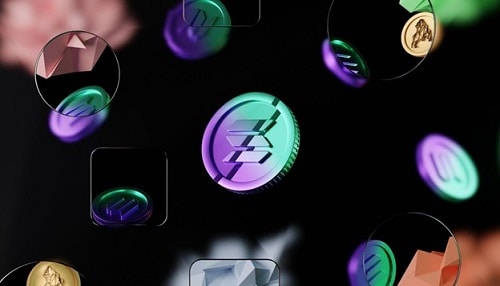In order to facilitate quick and safe transactions, the blockchain network Solana was created. Due to its rising fame and excellent performance, it has received a lot of notice lately. The main characteristics, advantages, and operation of Solana will all be covered in detail in this article.
What is Solana
In March 2020, the cryptocurrency network Solana was introduced. It is designed to enable fast and secure transactions and is built using a unique consensus algorithm called Proof of History (PoH). Solana’s primary goal is to offer a high-performance blockchain platform that can handle a large number of transactions per second (TPS) without compromising on security.
Characteristics of Solana
Proof of history (PoH)- Proof of History (PoH), a distinctive consensus method used by Solana, enables quick and effective transaction handling. In order to check and confirm future transactions, PoH compiles a chronological ledger of all transactions. As a result, Solana can increase its TPS rate without sacrificing security.
Tower BFT- Additionally, Solana employs a consensus method known as Tower BFT (Byzantine Fault Tolerance), which is intended to shield the network from attacks from bad players. Tower BFT operates by approving transactions and building blocks on the blockchain using a group of validators. This efficient consensus method guarantees that the network can support numerous operations without sacrificing security.
SOL token- The Solana network’s original currency is called SOL. It is employed for administration, transaction costs, and staking. Users can take part in the network and receive benefits for helping to secure it by staking SOL tokens.
Benefits of Solana
Fast and scalable- The speed and flexibility of Solana are two of its major advantages. The network’s maximum transaction processing speed (TPS), which is much greater than that of other blockchain networks, is 65,000. Through the use of PoH and Tower BFT, which facilitate effective transaction handling, a high TPS rate has been attained.
Low transaction fees- Solana’s cheap transaction costs are an additional perk. Everybody can use the network because it only costs a tiny portion of a penny per transaction. This contrasts with other blockchain platforms, which may impose high transaction costs when the network is heavily utilized.
Eco-friendly- Solana is also environmentally friendly because it uses much less electricity than other blockchain systems. This is because of the effectiveness of its consensus protocols, which make it possible to handle deals effectively without using a lot of energy.
How Solana works
Because Solana is a blockchain platform, a network of servers is used to keep a distributed database that is the foundation of the platform. In order to verify deals and build blocks for the blockchain, the nodes collaborate. On the Solana network, a transaction is disseminated to all of the nodes when it is sent by a user. The transaction is then checked by the nodes to make sure it is valid using the PoH registry.
After the transaction has been validated, it is put to a blockchain block and disseminated to the network. New blocks are added to the database by validators on the Solana network. Based on how many SOL coins they have invested on the network, validators are selected. As they can profit from building blocks and protecting the network, validators have an incentive to behave in the network’s best interests.
Ecosystem of Solana
On top of the Solana blockchain infrastructure, numerous initiatives and apps make up the Solana ecosystem. Decentralized finance (DeFi) apps, non-fungible tokens (NFTs), and gaming are among the initiatives and applications that are planned to benefit from Solana’s high speed and scalability. Serum, a decentralized exchange (DEX) that provides quick and affordable cryptocurrency trading, is one of the most well-known initiatives created on the Solana platform. Other noteworthy initiatives include Audius, a decentralized music streaming platform, and Raydium, a liquidity pool platform that allows users to receive rewards by supplying liquidity.
Tips for staking Solana
Users stake their coin by keeping it in a wallet to support the network and receive incentives. Because Solana employs a proof-of-stake consensus system, users can stake their SOL coins to aid in network security and receive rewards in exchange. Users that are interested on how to stake Solana must first purchase SOL coins and move them to a suitable Solana wallet that allows staking in order to stake Solana. The Solana online wallet, which is convenient and allows staking, is one well-liked choice. Users can choose the option to stake and input the quantity of SOL they desire to stake once the SOL coins are in the wallet.
As staking incentives are earned, users can then relax and watch their SOL coins increase. The total quantity of SOL staked and the network’s general staking action determine the rewards received. It’s crucial to remember that staked tokens are usually sealed up for a specific amount of time, and users might have to wait before they can unstake and retrieve their tokens. In addition to being a wonderful method to generate passive income, staking SOL tokens helps to keep the Solana network secure and stable.
Conclusion
In conclusion, Solana is a blockchain network that is quick, secure, and extremely scalable. It also has a developing ecosystem of projects and apps. Solana is a promising option for newcomers seeking to learn about cryptocurrencies and decentralized apps thanks to its distinctive agreement methods and user-friendly UI.





















